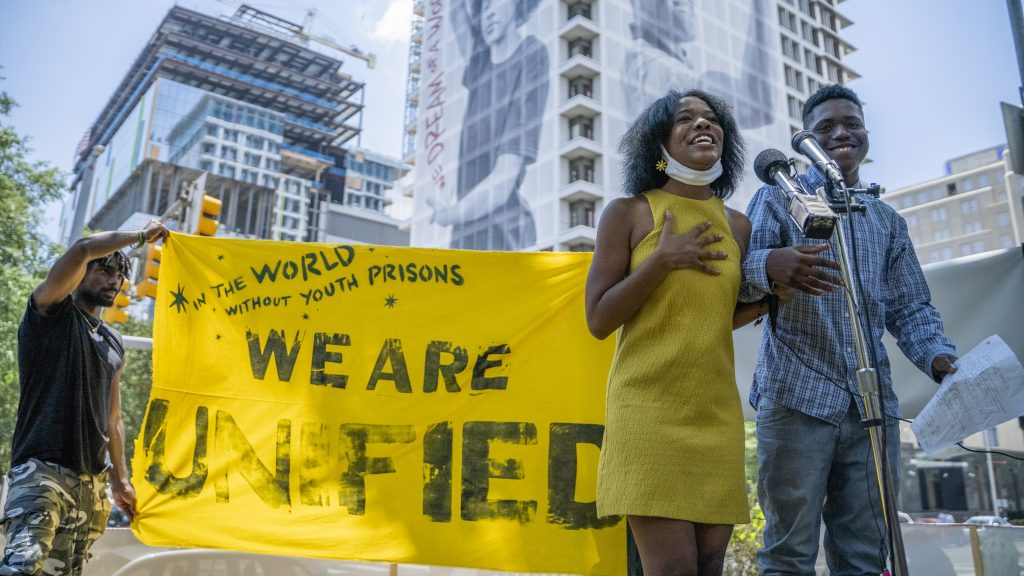By Rebecca Davis | Reprinted From: Variety

The Smithsonian Museum has commissioned a series of eight forward-looking shorts exploring social justice issues facing diverse communities across the U.S. to screen as part of its major upcoming November “FUTURES” exhibition.
“Futures We Dream” consists of new works created over the past year by nine independent filmmakers selected via a partnership with the non-profit Alliance for Media Arts + Culture.
Musician LL Cool J and “Friends” executive producer and director Kevin Bright, both advisors to the museum, are co-chairs of the series. They helped pick the Alliance as a partner, craft the project’s call for entries, and provide feedback on rough cuts.
The exhibition exploring visions of the future will run through July 2022 at America’s oldest national museum, the Smithsonian’s historic Arts and Industries Building (AIB), which opened in 1881. Intended as a celebration of the institution’s 175th anniversary, it will feature nearly 32,000 square feet of new immersive site-specific art installations, interactive exhibits, working experiments, inventions, speculative designs and objects alongside the films.
The building itself has remained closed to the public for nearly two decades, but will be temporarily re-opened for this exhibition before undergoing a thorough renovation next year.
“Museums speak to people, and that’s important, but they also need to listen, and especially on a subject like this,” said AIB director Rachel Goslins. “Film can be such an effective tool at collecting and synthesizing voices, so working with filmmakers and their communities is an inspirational and effective way to do that.”
Herself a former documentary filmmaker, Goslins wanted the exhibition to shine a light on community filmmaking in particular.
“As funding for local journalism dries up and local papers go under, it’s become more important than ever to have deeply local stories about communities. Documentary film and film more broadly has stepped in over the last decade to fill some of that vacuum,” she said.
As traditional distribution models evaporate, however, filmmakers creating such have found it harder and harder to make a living through their work. Museums have the potential to become a greater lifeline, Goslin
“You have art museums that do art films, and film festivals that do films, and history and culture museums that tend to do films within exhibitions that are about an object or the themes, but I think there’s so much more to do,” she said.
“There’s a synergy between what museums and cultural institutions are trying to do, which is figure out new ways to tell stories, and trying to reach people with new tools such as film or VR and AR and online. This overlap presents a real opportunity both for filmmakers and for museums and other cultural institutions.”
To create “Futures We Dream,” each filmmaker partnered with a local grassroots organization to together develop three-minute works that seek to inspire and uplift viewers while also delving into some of the most concerning social justice issues across the country, such as healthcare, environment, Indigenous rights, youth incarceration, cultural heritage and immigration.
Featured films include: “Shaking Out the Roots” from AFI Docs grand jury award-winner Mike Attie and community media center PhillyCAM, which melds spoken word and music performance set in Philadelphia’s urban farms to dismantle stereotypes of agriculture and slavery; “NuWu Means the People” from Mnicoujou Lakota filmmaker Ben-Alex Dupris and the NuWu Art space, which examines artists turning dilapidated buildings in Las Vegas into a vibrant community hub for the Nuwu, the first people of Nevada; “Dreaming in Green: Concrete Dreams” from South Asian photographer and American University professor Leena Jayawal and arts education non-profit Project Create, which uses a Washington, D.C. public art project featuring saris as a backdrop for an environmental message; and “On the Pulse of Life” from Emmy-nominated Jessica Jone and prenatal and postpartum program BElovedBIRTH Black Centering, which documents the birth justice moment in Alameda County, California.
They further include: “Appalachian Futures,” a collaboration between Emmy-nominated filmmakers, activists and journalists Sally Rubin and Ashley York and the support network STAY Project that provides glimpses of the hopes and prospects of young people in the Appalachian region; “Rising” from Puerto Rican native New Yorker and Mellon National Foundation-awarded playwright and actor Mildred Ruiz-Sapp, who partnered with Southern Oregon Shakes SafetyNet to tell the story of how artists from the Oregon Shakespeare Festival worked to help the Oregon town Ashland after it was ravaged by fires in 2020; “Freedom Constellations” from multimedia artist Mark Strandquist and Richmond, Virginia-based youth incarceration cultural organizing project Performing Statistics, which tells the stories of young people impacted by the juvenile justice system; and “Tiichajil (Good Life)” from Academy Award and Sundance Award-winning director and producer Pamela Yates and members of the Pueblo Maya-Ixil, which tells the story of three Mayan men from Guatemala seeking asylum in Texas after months in an ICE detention center.
The project was made possible by Bright and his wife Claudia W. Bright, with in-kind support from LG.
“Producing a film program for ‘FUTURES’ has been an extraordinary collaboration with the Smithsonian,” said Wendy Levy, executive director of The Alliance for Media Arts + Culture, expressing both entities’ commitment to working at the intersection of art, technology, culture and community.
“We want to model a possible future film industry that is less hierarchical and more caring and equitable,” she added. “The result is eight intentional works of art – powerful, futuristic, delightful and evocative — co-created by a network of artists deeply embedded in their communities.”
